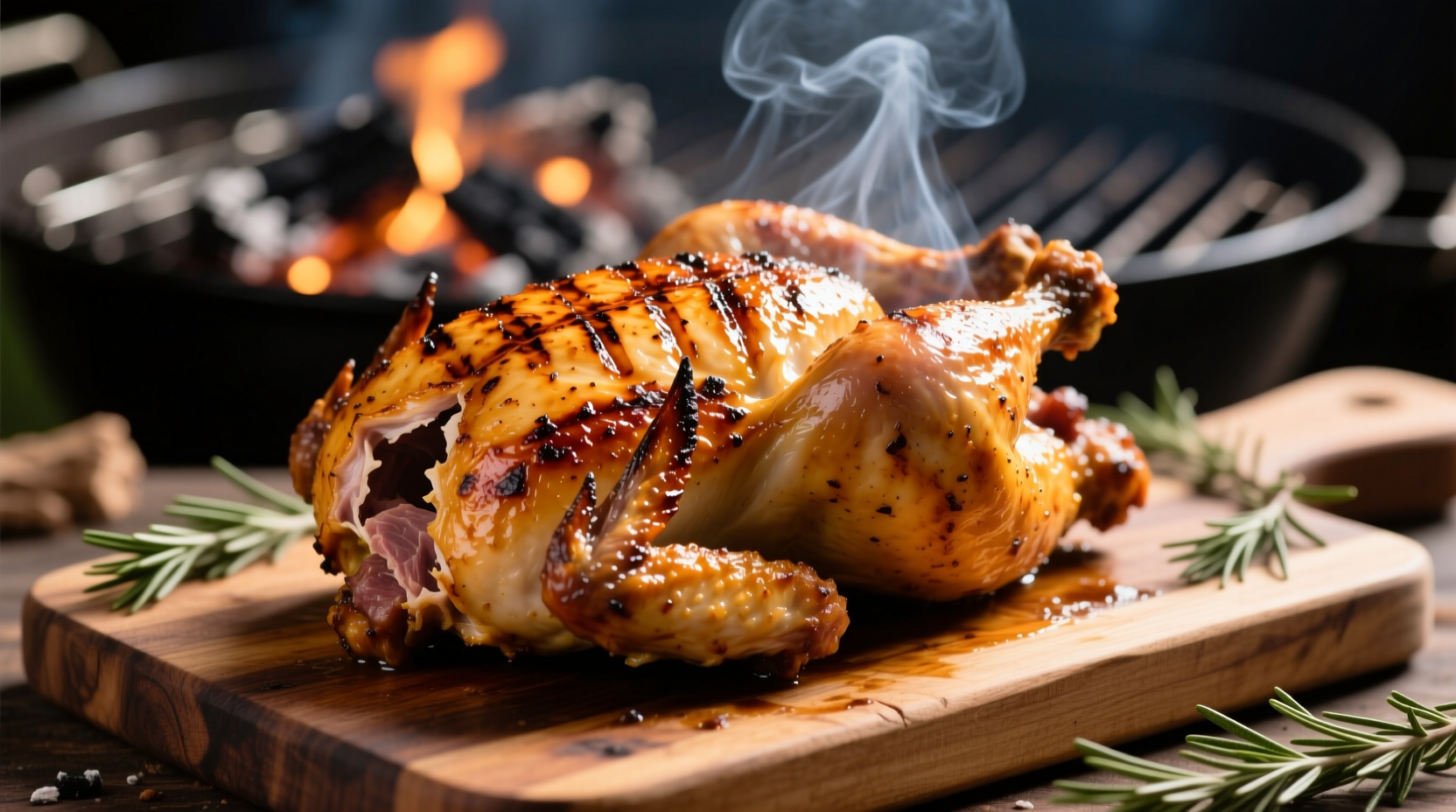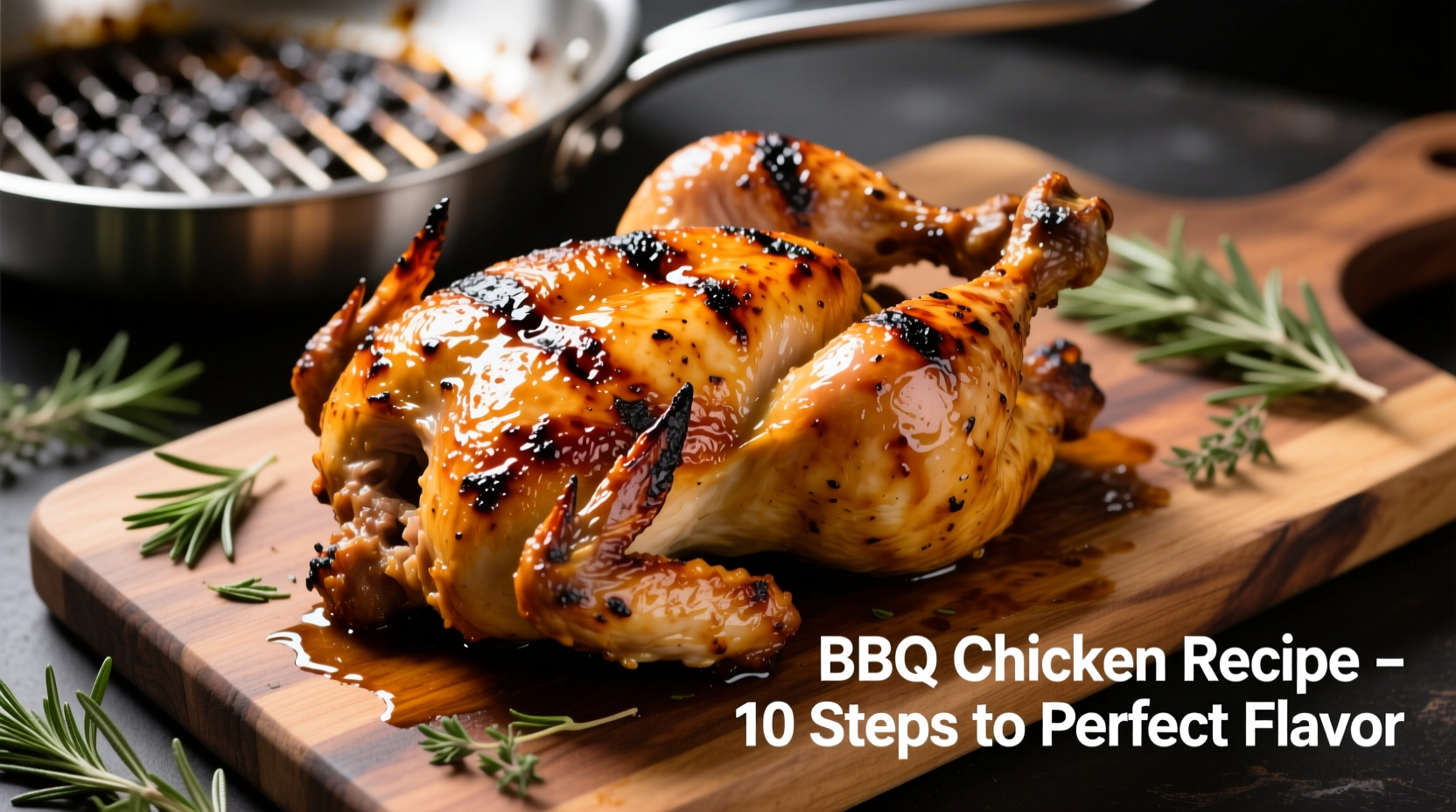Nothing beats perfectly grilled BBQ chicken—crispy skin, smoky aroma, and tender meat that falls off the bone. Yet many home cooks struggle with dry, burnt, or undercooked results. The secret lies in understanding temperature control, timing, and technique. After testing dozens of methods across charcoal, gas, and pellet grills, we've refined the most reliable approach for consistently delicious BBQ chicken.
Why Your BBQ Chicken Fails (And How to Fix It)
Most backyard chefs make three critical errors: improper temperature management, premature sauce application, and skipping the resting period. Chicken breasts dry out at temperatures above 375°F, while thighs need higher heat to render fat properly. Sauce sugars burn below 225°F, ruining flavor. And cutting too soon releases precious juices. Let's fix these issues systematically.
Essential Preparation: Setting Up for Success
Start with quality ingredients and proper setup. Choose bone-in, skin-on pieces for maximum flavor and moisture retention—they cook more evenly than boneless cuts. Pat chicken completely dry with paper towels; moisture prevents proper browning. Season generously with salt at least 30 minutes before cooking to enhance flavor penetration.
| Chicken Cut | Prep Time | Recommended Brine |
|---|---|---|
| Breasts | 30-60 min | Buttermilk (4 hrs) |
| Thighs | 15-30 min | Salt rub (no liquid) |
| Whole chicken | 2-4 hrs | Dry brine (12-24 hrs) |
According to USDA Food Safety guidelines, always handle raw poultry on separate cutting boards and wash hands thoroughly after contact. Never rinse chicken before cooking, as this spreads bacteria through splash contamination.
The Perfect Cooking Process: Step-by-Step
Preheat your grill to 325-350°F using indirect heat—turn off burners on one side for gas grills, or push coals to one side for charcoal. Place chicken skin-side down on the indirect heat zone. Close the lid and maintain consistent temperature.
Cook bone-in pieces for 35-45 minutes, turning once halfway through. Insert an instant-read thermometer into the thickest part without touching bone. Remove chicken at 157-160°F—it will carry over to the safe 165°F during resting. Apply BBQ sauce only during the final 10-15 minutes to prevent burning.

Troubleshooting Common BBQ Chicken Problems
Burnt exterior, raw interior: Your grill temperature is too high. Lower to 325°F and use indirect heat. Dry, tough meat: You're overcooking or using boneless cuts. Stick to bone-in pieces and remove at 160°F internal temp. Flare-ups: Move chicken to indirect zone immediately and close vents slightly on charcoal grills.
Regional BBQ styles vary significantly in technique. Carolina-style uses vinegar-based sauces applied throughout cooking, while Kansas City methods rely on thick tomato-based sauces added late. Texas BBQ often features chicken smoked first, then finished with sauce. Choose your regional approach based on desired flavor profile.
Serving and Storage: Don't Skip This Step
Rest chicken for 10-15 minutes before serving—this allows juices to redistribute. Tent loosely with foil to maintain warmth without steaming the skin. Store leftovers in airtight containers within 2 hours of cooking. Properly stored BBQ chicken keeps for 3-4 days in the refrigerator or up to 3 months frozen.
Advanced Tips for Next-Level Results
For restaurant-quality results, try these professional techniques: inject breasts with seasoned broth before cooking, use fruit woods like apple or cherry for subtle smoke flavor, and finish with a butter baste for extra richness. When cooking whole chickens, spatchcocking (removing the backbone) ensures even cooking and crispier skin.











 浙公网安备
33010002000092号
浙公网安备
33010002000092号 浙B2-20120091-4
浙B2-20120091-4